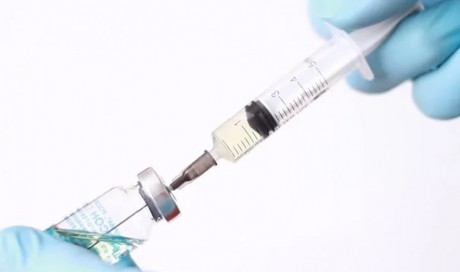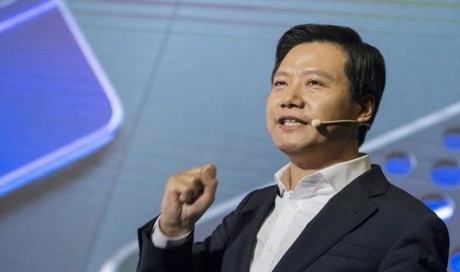In Alaska, Drilling & Measurements used a combination of technologies to help a North Slope operator to drill the longest horizontal lateral in North America of 21,748 ft. The technologies used in this dual-lateral well included the PowerDrive Orbit* rotary steerable system, PeriScope HD* multilayer bed boundary detection service, and SonicScope multipole sonic-while-drilling service.
Production

Production revenue of $3.3 billion, of which 48% came from the international markets, increased 10% sequentially. Despite the impact of the spring breakup in Canada, OneStim revenue in North America land grew 17% sequentially, outperforming both the 7% increase in US land rig count and the 8% growth in US land market stage count. This performance was driven by market share gains from deployment of additional capacity and operational efficiency improvements as pricing remained flat. The customer trend of separating the procurement of pumping services and sand supply accelerated during the quarter. However, the vertical integration of the Schlumberger offering enabled participation in both integrated and stand-alone sand contracts to maintain the full revenue potential of both pumping services and sand supply. New contracts outside North America in Australia, Indonesia, India, and the seasonal recovery in China contributed to international growth, while activity in Saudi Arabia benefited from increased stimulation and coiled tubing work as well as from higher completions product sales.
Production pretax operating margin of 10% increased 239 bps sequentially due to the increased activity and operational efficiency improvements of OneStim hydraulic fracturing operations in the North America Land GeoMarket. Margin also improved due to the benefits from the vertical integration of the pressure pumping business.
Production benefited from increased OneStim operations as well as new contract awards and the deployment of advanced stimulation and completions technologies.
In South Texas, OneStim executed a project for Chesapeake Energy to continuously improve operational efficiency in the Eagle Ford Shale play. Through waste identification and elimination, standardized procedures, and technology implementation, OneStim increased total operating time and productivity. Results included a 50% improvement in pad-to-pad mobilization time, a 55% increase in stages placed per day, and a 17% increase in pumping hours per day. On average, Chesapeake saved $150,000 per pad and reduced operating time on each pad by four days.
In South Texas, OneStim used a geoengineered approach to help Lonestar Resources Ltd. increase oil production up to 86% compared with offset wells in the Eagle Ford Shale play. A combination of technologies enabled optimization of drilling, completions, and stimulation plans across long laterals in 18 wells in two fields while avoiding drilling challenges associated with ash beds, faults, and nearby water-bearing zones. The geoengineered wells produced more hydrocarbon per 1,000 ft of lateral section compared with offset wells. On average, six oil wells produced 80% more and four wells in a high gas-to-oil ratio area produced 86% more. ThruBit* through-the-bit logging services improved knowledge of rock properties while the Kinetix Shale* reservoir-centric stimulation-to-production software was used to optimize completion and stimulation treatments.
In Russia, Well Services deployed the BroadBand Precision* integrated completion service for Gazprom Neft to reduce operating time in a well by more than eight days compared with the planned AFE. The reservoir’s complex geology favored a horizontal well with multistage stimulation. BroadBand Precision service set a new field record by completing 30 fracturing stages within 220 hours, which was approximately 53% faster than originally planned.
In Colombia, Ecopetrol awarded Schlumberger a six-year contract for the provision of Artificial Lift Solutions electric submersible pumps (ESPs) and supporting services throughout the country. This will include REDA Maximus* ESP systems equipped with REDA Continuum* unconventional extended-life ESP stages to accommodate a broad range of expected production volumes.
In North Kuwait, Well Services deployed ACTive* real-time downhole coiled tubing services and the OpenPath Reach* extended-contact stimulation service for Kuwait Oil Company to increase total oil production fourfold in four wells in the Sabriya Field. VDA* viscoelastic diverting fluid was deployed to block off a thief zone in a long horizontal water injector well and the OpenPath Reach stimulation treatment created a network of wormholes in the reservoir. This resulted in a 400-psi increase in the reservoir’s bottomhole pressure, improving the effectiveness of the waterflood system while eliminating the need for a workover rig.
In Sakhalin, Schlumberger Completions installed the Manara* production and reservoir management system to enhance production in the Odoptu Field for the Sakhalin-1 Project.
Cameron

Cameron revenue of $1.3 billion, of which 52% came from international markets, declined 1% sequentially primarily due to lower OneSubsea revenue on a declining project backlog. This decline was partially offset by higher service activity for Surface Systems in North America and higher product sales for Valves & Measurement, while Drilling Systems revenue was essentially flat sequentially. By geography, North America and Latin America revenue grew sequentially, but this was more than offset by lower revenue in Middle East & Asia, while Europe/CIS/Africa revenue was flat.
Cameron pretax operating margin of 13% was essentially flat sequentially, as increased sales in Surface Systems and Valves & Measurement, combined with improved project execution in OneSubsea, offset the impact of falling margin in Drilling Systems from the declining backlog.
Cameron won new contracts during the quarter for managed pressure drilling (MPD) systems and integrated drilling packages as well as integrated services contracts for pressure control equipment management and production enhancement.
Transocean awarded Schlumberger a contract for the provision of key components for two MPD systems for use offshore in the US Gulf of Mexico. The MPD system provides greater control of the annular pressure profile throughout the wellbore and enables drilling of narrow-pressure margin formations safely and more efficiently.
In Norway, Transocean added four floating rigs operating in the Norwegian sector of the North Sea to an existing pressure control equipment management service contract with Schlumberger for a period of 10 years. With this agreement, Schlumberger provides a comprehensive suite of solutions that support maintenance and service of blowout preventer systems and other pressure control equipment for 13 of Transocean’s ultradeepwater and harsh environment drilling rigs.
In Russia, LUKOIL awarded Schlumberger a contract for the provision of a complete drilling package, including pressure control and rig equipment, fluid and solids handling, and a cementing unit for operations in the Caspian Sea. Construction of the rig, which will occur in Astrakhan, is expected to begin in the third quarter of 2019.
Murphy Sabah Oil Co., Ltd. awarded Schlumberger an integrated services contract for a three-well production enhancement campaign offshore in the Siakap North-Petai Field in Malaysia. Contract scope includes project management and vessel services, well stimulation, fluid and pumping services, coiled tubing services, and a OneSubsea MARS* multiple application reinjection system as well as a subsea modular injection system.
Financial Tables
Condensed Consolidated Statement of Income (Loss)
(Stated in millions, except per share amounts)

Condensed Consolidated Balance Sheet
(Stated in millions)

Liquidity

Details of changes in liquidity follow:

- “Net Debt” represents gross debt less cash, short-term investments and fixed income investments, held to maturity. Management believes that Net Debt provides useful information regarding the level of Schlumberger’s indebtedness by reflecting cash and investments that could be used to repay debt. Net Debt is a non-GAAP financial measure that should be considered in addition to, not as a substitute for or superior to, total debt.
- Includes depreciation of property, plant and equipment and amortization of intangible assets, multiclient seismic data costs and SPM investments.
- Includes severance payments of $160 million and $84 million during the six months and second quarter ended June 30, 2018, respectively; and $230 million and $90 million during the six months and second quarter ended June 30, 2017, respectively.
- “Free cash flow” represents cash flow from operations less capital expenditures, SPM investments and multiclient seismic data costs capitalized. Management believes that free cash flow is an important liquidity measure for the company and that it is useful to investors and management as a measure of Schlumberger’s ability to generate cash. Once business needs and obligations are met, this cash can be used to reinvest in the company for future growth or to return to shareholders through dividend payments or share repurchases. Free cash flow does not represent the residual cash flow available for discretionary expenditures. Free cash flow is a non-GAAP financial measure that should be considered in addition to, not as substitute for or superior to, cash flow from operations.
Charges & Credits
In addition to financial results determined in accordance with US generally accepted accounting principles (GAAP), this second-quarter 2018 earnings release also includes non-GAAP financial measures (as defined under the SEC’s Regulation G). Net income, excluding charges & credits, as well as measures derived from it (including diluted EPS, excluding charges & credits; Schlumberger net income, excluding charges & credits; and effective tax rate, excluding charges & credits) are non-GAAP financial measures. Management believes that the exclusion of charges & credits from these financial measures enables it to evaluate more effectively Schlumberger’s operations period over period and to identify operating trends that could otherwise be masked by the excluded items. These measures are also used by management as performance measures in determining certain incentive compensation. The foregoing non-GAAP financial measures should be considered in addition to, not as a substitute for or superior to, other measures of financial performance prepared in accordance with GAAP. The following is a reconciliation of these non-GAAP measures to the comparable GAAP measures.
(Stated in millions, except per share amounts)

* Does not add due to rounding
There were no charges or credits during the first quarter of 2018.
Segments
(Stated in millions)

(1) Excludes interest included in the Segments results.
Supplemental Information
1) What is the capex guidance for the full year 2018?
Capex (excluding multiclient and SPM investments) for the full year 2018 is expected to be approximately $2 billion, which is similar to the levels of 2017 and 2016.
2) What was the cash flow from operations for the second quarter of 2018?
Cash flow from operations for the second quarter of 2018 was $987 million and included $84 million of severance payments.
3) What was the cash flow from operations for the first half of 2018?
Cash flow from operations for the first half of 2018 was $1.6 billion and included approximately $160 million of severance payments.
4) What was included in “Interest and other income” for the second quarter of 2018?
“Interest and other income” for the second quarter of 2018 was $40 million. This amount consisted of earnings of equity method investments of $28 million and interest income of $12 million.
5) How did interest income and interest expense change during the second quarter of 2018?
Interest income of $12 million declined $16 million sequentially. Interest expense of $144 million was essentially flat sequentially.
6) What is the difference between pretax operating income and Schlumberger’s consolidated income before taxes?
The difference principally consists of corporate items, charges and credits, and interest income and interest expense not allocated to the segments as well as stock-based compensation expense, amortization expense associated with certain intangible assets, certain centrally managed initiatives, and other nonoperating items.
...[ Continue to next page ]
Share This Post














